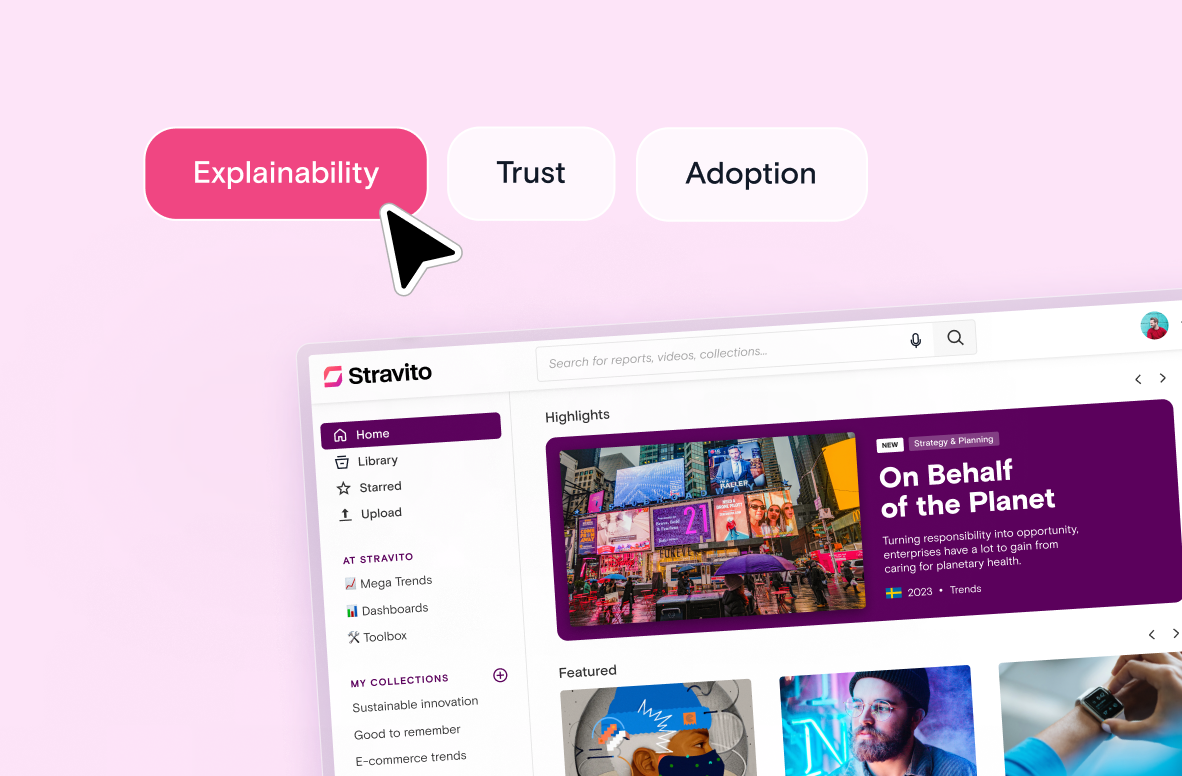You’ve completed the research, gathered valuable insights, and delivered thoughtful recommendations — so why does it sometimes feel like your UX strategy isn’t reaching the people who need it most?
You’re not alone. Many UX researchers struggle to present their findings in front of the right teams, making it harder to drive real change. At Stravito, we recently surveyed over 200 UX professionals with three polls during our recent webinar “Making UX research matter to the business” to understand how well research is being communicated within organizations.
The results reveal clear opportunities to amplify research impact. Here’s what we discovered, along with some best practices on how to make UX research impossible to ignore in your organization.
What percentage of your organization would find your research helpful?
During our webinar, our first poll revealed how impactful research is typically perceived within organizations. The results highlighted a clear challenge: UX research isn’t yet regarded as an enterprise-wide asset.
When asked what percentage of their organization would find UX research helpful, just a small number (16%) of respondents believed that over 81% of their company benefits from it. The vast majority saw a far more limited reach. And worryingly, 15% believed that UX research is helpful in up to 20% of their organization, and 2% stated that no one in their company benefits from it at all.
The results confirm a reality many UX teams experience firsthand: research is often tucked away within product and design teams, leaving other departments unaware of its significant value. But UX insights aren’t limited to shaping better user experiences. They have the potential to influence various areas in business, including strategy, marketing, operations, and customer success. The question is: How can we reframe UX research to make it valuable and noticed across entire organizations?
One solution is socialization at scale — delivering research in accessible, easy-to-digest formats. For example, regular internal email round-ups, short-form reports, and strategic briefings can help introduce UX research into everyday decision-making across teams. Another solution is always-on enablement, which involves inviting the entire organization to UX community calls. Here, everyone learns firsthand how UX insights drive impact beyond design and product development.
Additionally, co-creating insights with consumer research teams reinforces UX research’s role in shaping business-wide strategies. When UX research is positioned as a business driver rather than a specialized or isolated function, it becomes a force multiplier for enterprise success.
What percentage of your colleagues who would benefit from your research are aware of it?
The second poll from our webinar explored how well research findings are communicated to those who could benefit from them:
The results highlighted another critical challenge: even when insights are valuable, they often remain unseen by those who could benefit most. Almost half of respondents reported that less than 40% of their colleagues who would benefit from UX research are even aware of it. This gap in awareness is a significant communication issue and a missed opportunity. When UX research isn’t visible, it doesn’t help inform decisions, shape strategies, or create the potential impact it can. To increase visibility, UX teams need to integrate research into the fabric of the organization.
One approach is to tap into existing communities by presenting UX insights at marketing, product, or commercial all-hands meetings. These touchpoints bring research directly to the teams that can use it most. Another strategy is securing leadership endorsement. Gaining support from department heads increases credibility and opens doors for UX research to be embedded into key business conversations and decisions.
UX research can also be woven into company workflows by integrating findings into decision-making processes and collaborating with other teams. For example, L&D can create e-learning modules and training courses featuring UX insights for other teams and new staff members. Finally, UX teams can host gemba-style shadowing days, where colleagues from other departments experience UX research firsthand. When UX research is seen in action, its value becomes impossible to ignore.
How much time do you spend communicating about and socializing your research?
The third poll examined the time investment in sharing research findings effectively.
Over 60% of respondents spend more than 20% of their time communicating their research. But this is still not effective enough, as evidenced by the previous poll results. So, what can we do to be more effective in communicating our research? What strategies can we employ to resolve these issues?
Increasing visibility doesn’t have to mean doubling workloads. Small, strategic actions can significantly expand research reach with minimal extra effort. One of the most effective tactics is sending out a monthly UX research newsletter. This can be a short, digestible email summarizing key insights delivered directly to stakeholders or even entire organizations. Additionally, posting about recent UX insights on internal social platforms (for example, Slack, Teams, Workplace) allows researchers to share findings in real-time, meeting teams where they already engage.
Collaborating with internal communications teams also means UX research is embedded in company-wide updates, whether through an intranet corner or leadership newsletters. Opening up UX research community calls, which can also be promoted on internal social channels, to the entire organization also broadens awareness.
Make UX research impossible to ignore
To summarize, the potential impact of UX insights is often limited by a lack of visibility in organizations and the time constraints of researchers. But when UX contributions are actively and consistently shared and embedded into company culture, they can become powerful drivers of improved decision-making.
Try the strategies above and see how much further your research can go.
Want to learn more?
Join us live on February 26 at 9 AM PT for an exclusive webinar with Robin Beers, former UX Research leader at Wells Fargo and Workday, as we explore how to elevate UX research, break past outdated order-taking culture, and make insights impossible to ignore. Don’t miss out—sign up below!




